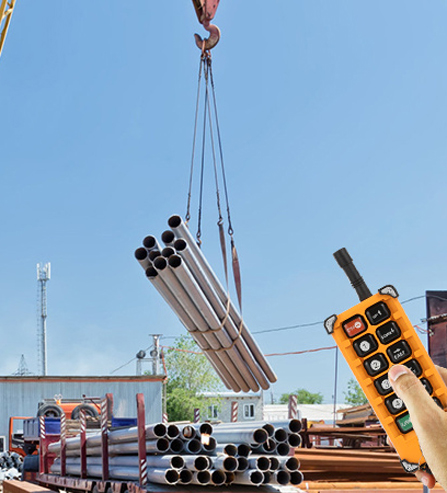PACECO Corp. has recently initiated the commercial operations of the world’s first rubber-tired gantry (RTG) Crane powered by hydrogen fuel cells at the Port of Los Angeles. Established in 1958, PACECO Corp. is a prominent supplier in the container handling sector, headquartered in Hayward, California. Throughout the years, the company has successfully delivered more than 2500 container handling systems to over 200 ports globally. The Port of Los Angeles will serve as one of the primary locations for the ARCHESH2 projects, known as the California Hydrogen Hub, which was recently designated by the Department of Energy. The California hydrogen hub is expected to receive a substantial amount of funding, up to $1.2 billion from DOE, facilitating an overall investment of up to $15 billion in hydrogen technologies. Pioneering projects like PACECO's hydrogen-powered crane are indicative of the exciting deployments to come in decarbonizing ports in Los Angeles and reducing pollution in the region as a whole.
The RTG A-frame Cranes can flexibly move around the terminal and service multiple rows of stacked containers, unlike its rail based brotheren that move only over one row. Containers can be moved from one sport to another or load containers on vehicles. The H2-ZE RTG Transtainer Crane, developed in collaboration with MITSUI E&S and with a funding from the Japanese New Energy and Industrial Technology Development Organization (NEDO), began operations at Yusen Terminals Inc. (YTI) on May 7, 2024, marking the first time a fully hydrogen powered RTG crane has commercially been deployed into operation in the world. Grab Bucket Crane

"YTI is proud to host this groundbreaking demonstration project from PACECO.” said Alan McCorkle, President & CEO at Yusen Terminals “Bringing the H2-ZE RTG Transtainer Crane into operation at our terminal is a critical step towards a zero-emissions terminal. This crane will help support the Port of LA’s ambitious sustainability goals.”
The H2-ZE RTG Transtainer Crane has been revolutionized with the introduction of fuel-cell hydrogen technology. This marks the latest advancement in the crane's powerplant design, as part of a phased approach to achieving zero emissions. Initially, the crane relied on a 500 kW diesel genset, which emitted carbon dioxide equivalent to burning over 400 barrels of oil annually. The genset powered the electrified wheels, much like a diesel train locomotive or heavy-duty mining vehicles. Over time, PACECO gradually hybridized the crane's power plant by incorporating a 100 kW diesel engine supported by a larger battery and integrated electronics. However, the most recent design takes emissions reduction to the next level. The PACECO and MITSUI E&S have developed a custom-built fuel cell power pack unit that replaces the diesel component in the already-electrified system. This fuel cell power pack unit, sourced from Toyota, shares fuel cell and hydrogen tank components with the Mirai's passenger fuel cell car. In the future, there is potential for integration of US-based components as well.
This innovative system boasts 60 kW of continuous power, storage capacity of 32 kg at 700 bar pressure, and can operate for up to 16 hours. With the deployment of this advanced technology, the crane achieves absolute zero emissions, setting a new standard in environmentally-friendly operations. In addition to eliminating emissions, hydrogen allows for long-term operation, making it suitable for the typical two-shift terminal operation. The alternative options of relying solely on batteries or using a power cable were not deemed feasible considering the duty cycle and logistical aspects of deployment.
The refueling takes place during the third non-operational shift between 3 and 7 am once per day. Toyota Tsusho and OneH2 built a mobile refueler, a multi-tank trailer, with a maximum pressure of 930 bar. Using the cascade, tank switching approach with the flow rates up to 2 kg per minute, the overall fueling takes about a half hour.
PACECO's trailblazing demonstration represents a significant step in sustainability efforts for the ... [+] global maritime logistics industry.
PACECO's trailblazing demonstration represents a significant step in sustainability efforts for the global maritime logistics industry. Planned to operate over the next four years at Yusen Terminals at the Port of Los Angeles, this state-of-the-art-project, elevates PACECO’s commitment to global efforts to reduce port emissions by deploying zero-emission hydrogen technology. The company is eager to expand deployment of its fuel cell power pack concept and is pursuing opportunities for future deployments.
"By bringing the H2-ZE RTG Transtainer Crane into operation, we are not just introducing new fuel technology for cranes but are leading the way for our industry to reduce emissions significantly,” said Troy Collard, general manager of sales at PACECO. “We are excited that this crane is in operation here in Los Angeles and are thankful to our pilot partners for all of their support throughout the process."
One Community. Many Voices. Create a free account to share your thoughts.
Our community is about connecting people through open and thoughtful conversations. We want our readers to share their views and exchange ideas and facts in a safe space.
In order to do so, please follow the posting rules in our site's Terms of Service. We've summarized some of those key rules below. Simply put, keep it civil.
Your post will be rejected if we notice that it seems to contain:
User accounts will be blocked if we notice or believe that users are engaged in:
So, how can you be a power user?

Harbor Freight Gantry Thanks for reading our community guidelines. Please read the full list of posting rules found in our site's Terms of Service.